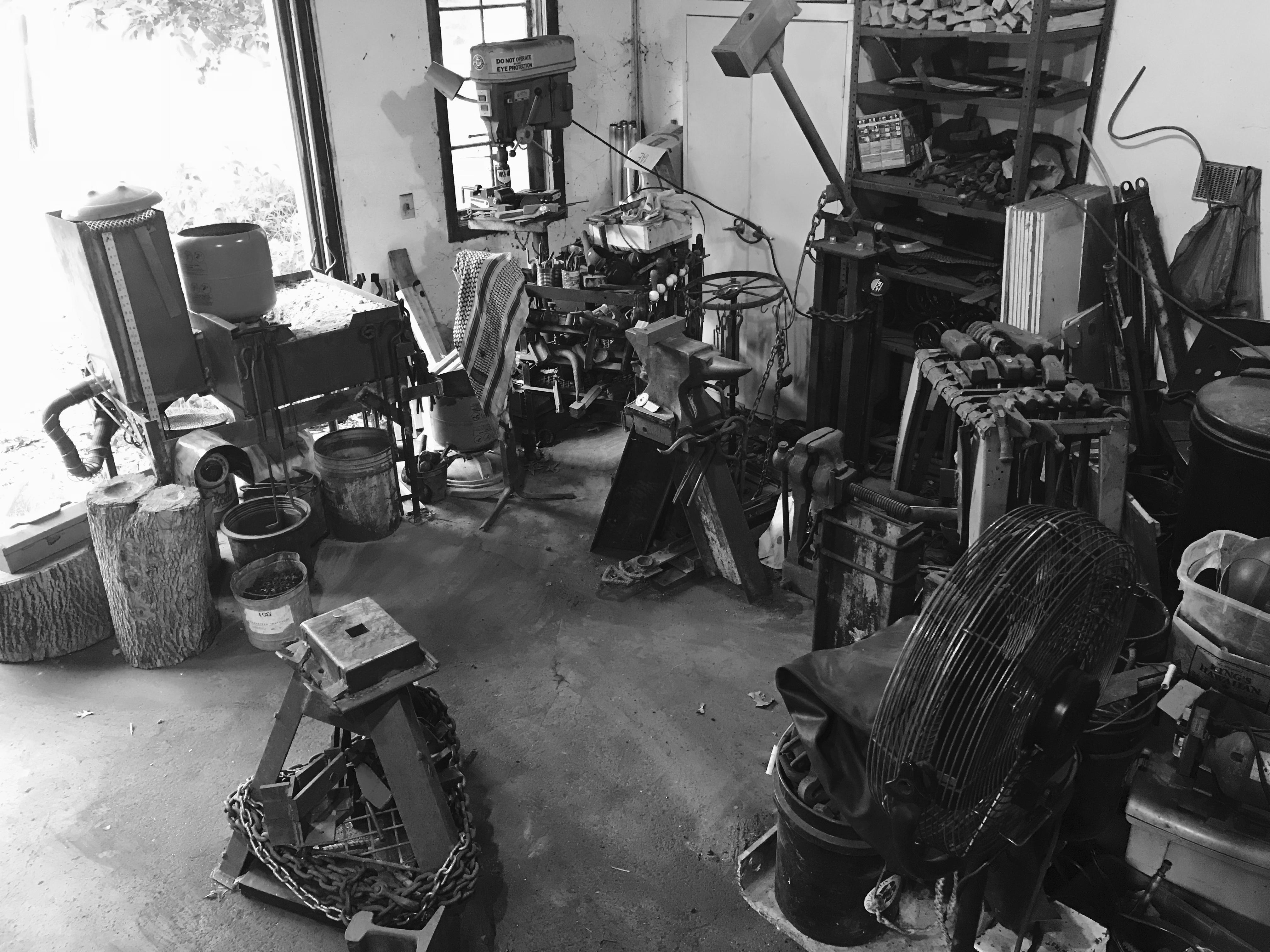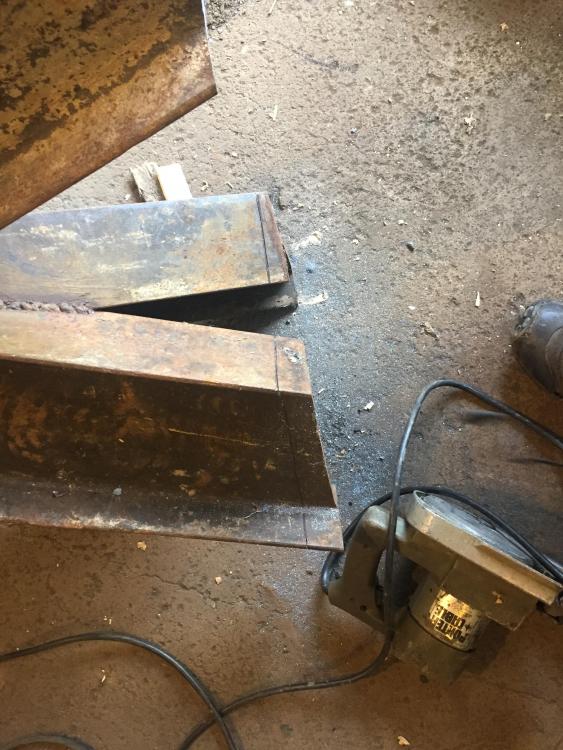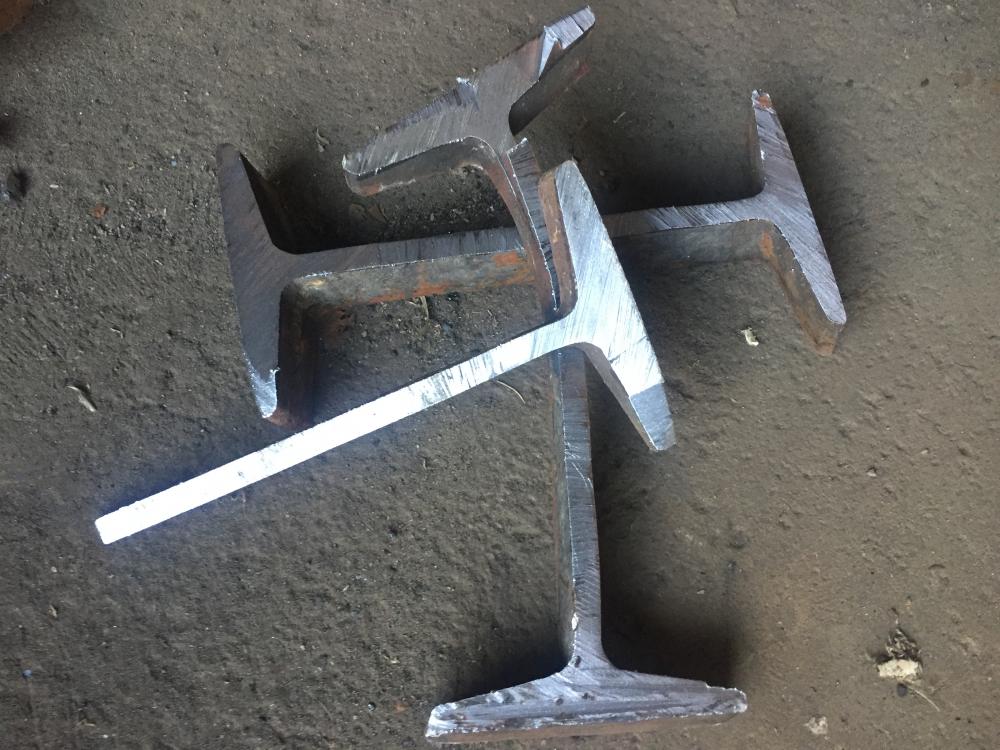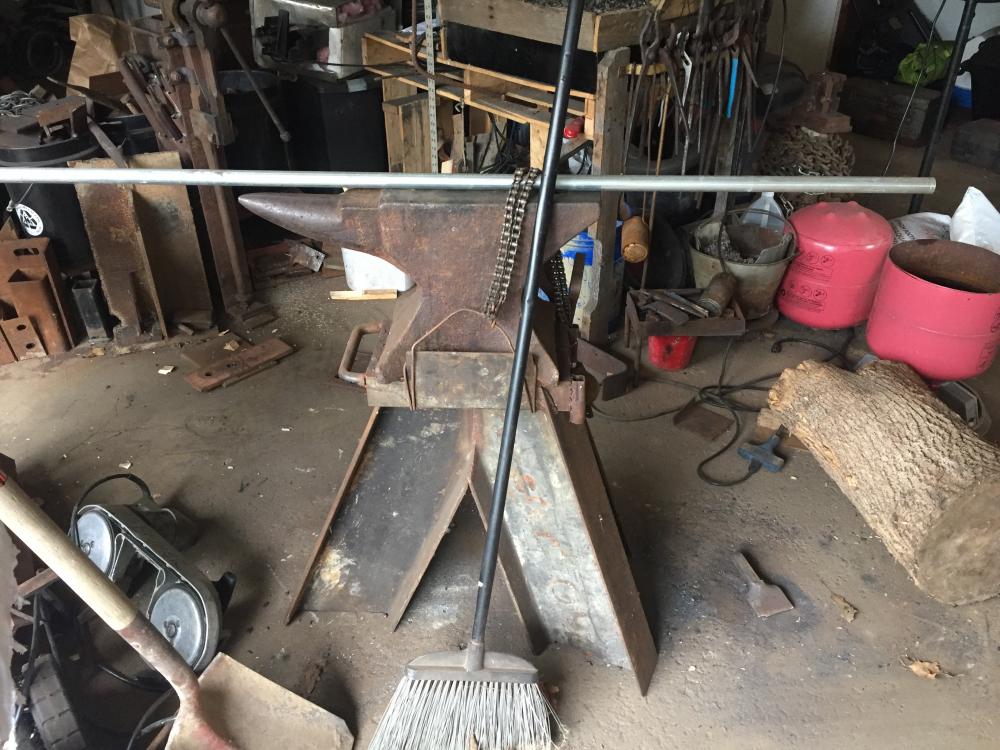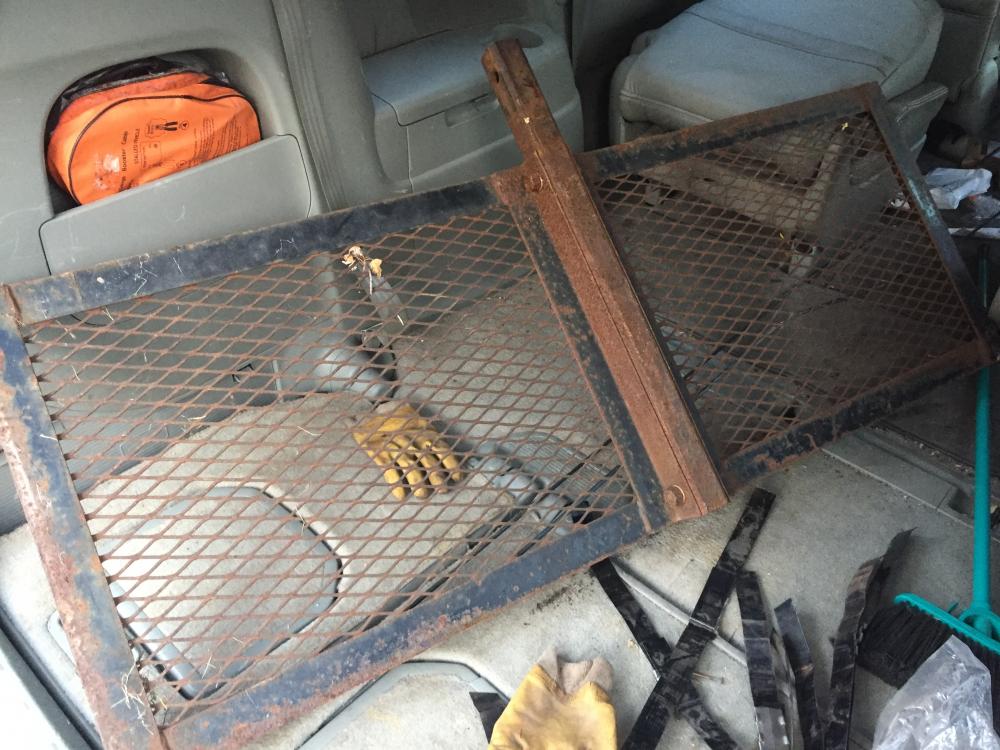-
Posts
19,278 -
Joined
-
Last visited
Content Type
Profiles
Forums
Articles
Gallery
Downloads
Events
Everything posted by JHCC
-

Hardening a CR-V based hotcut hardy tool
JHCC replied to CheschireCat's topic in Heat Treating, general discussion
You're doing great, @CheschireCat. Just keep grinning! -
Save the scale from your anvil. By the time you get around to smelting, you'll have a head start on your magnetite collection.
-
Don't worry about making bloomery steel -- you're years away from that at best. Get your skills solid on known stock before you try to make your own. What's the IEP for, if I may ask? My son's on his for ADD & ASD, and we've got a number of IFI members who are on the autism/Asperger's spectrum.
-
Further update: Erika just posted
-

Anvil buying advice requested
JHCC replied to RuckSack's topic in Anvils, Swage Blocks, and Mandrels
Swedish cast steel anvils usually have the name stamped into the side; "Soderfors" and "Kohlswa" are two well-known brands. Cast steel anvils usually have very loud, clear rings. EDIT: Just saw the pictures. I agree with @Black Frog's comment below: definitely Swedish. A big plus for #1. (I mean, it's not a Mousehole, but you can't have everything.) -
5160 is notoriously difficult to forge weld. There are some other threads about this here on IFI; take a look there for more info.
-

Asking for design help for an anvil stand
JHCC replied to JHCC's topic in Stands for Anvils, Swage Blocks, etc
UPDATE: That slope I mentioned earlier became a LOT more obvious when I made the big shift from horn-on-the-left to horn-on-the-right. After muddling by with some heavy shims (chunks of rail plate and structural steel), it became clear that drastic action was needed. I shimmed up the feet until the anvil was (mostly) level, marked around the feet with a Sharpie and a wooden block, and cut off the excess with the PortaBand. (That thing is wonderful. Wish I'd had it when I first cut out the pieces for the stand -- it would have been so much easier!) Not a perfect job, but it's a LOT closer to level, and works very nicely. Here's the marking before cutting: And the stand leveled out: And the offcuts: -

Anvil buying advice requested
JHCC replied to RuckSack's topic in Anvils, Swage Blocks, and Mandrels
If you do get #2, don't do anything to the face other than using it. Hot metal and scale will eventually polish it smooth, and you'll avoid damaging or shortening the life of the anvil face. -

What did you do in the shop today?
JHCC replied to Mark Ling's topic in Blacksmithing, General Discussion
To quote my Calculus teacher in college, "Logic is the art of going wrong with confidence!" -

Anvil buying advice requested
JHCC replied to RuckSack's topic in Anvils, Swage Blocks, and Mandrels
Welcome to IFI, Nathan! Thanks for putting your location in your profile settings -- that helps a lot with a lot of questions. Looking at your two anvils, it's a bit of six-of-one, half-a-dozen-of-the-other. The smaller one has a much cleaner face and edges, but the larger one is, well, larger. Their price per pound is comparable, with the larger being just slightly more affordable. The rebound and condition may swing the needle one way or the other, but that's not something we can see in the photos. A lot depends on other factors. Can you afford the larger anvil? Do you plan to be working on larger pieces that will require a heavier anvil? And so on. Were I in your position, I'd be inclined towards the smaller one, for a few reasons. First, the condition of the face is excellent, and you'll not have to spend extra time on cleaning up your forgings. Second, if you make a really heavy stand and attach the anvil with some silicone caulk, you can offset at least some of the disadvantages of the lighter weight. (My own experiences with moving from a wooden stump to a welded steel stand, the saga of which can be read here, really demonstrated this to me very clearly.) Third, you'll be spending $225 less, which will then be available for tools, fuel, and steel. My two cents. Your mileage may vary, and you may find that the ring-and-rebound tests pick a clear winner for you. Good luck, and keep us posted. -
Or add some more lights!
-

What did you do in the shop today?
JHCC replied to Mark Ling's topic in Blacksmithing, General Discussion
And that is why we have sweatbands! I use a keffiyeh/shemagh tied to completely cover my forehead, right down to the top of my (safety!) glasses -- it wicks away all the perspiration and also keeps coal dust and soot out of my hair. -
UPDATE: Neil is resting and appears to be stable. I won't get into all the detail that Erika shared, but suffice it to say that while there's no stroke, he's had two subdural haematomata, which is what caused the aphasia. Diagnosis and treatment progress. Thank you all for your prayers. Erika and Neil are devout Buddhists, and the last thing Neil was able to say was his own name, some Buddhist prayers, and several repetitions of the word YES.
-

What did you do in the shop today?
JHCC replied to Mark Ling's topic in Blacksmithing, General Discussion
I got the idea from Andy McKenzie/ @Everything Mac: it’s a heavy metal holder for a wooden mallet head. -

Atlanta Apartment and Blacksmithing
JHCC replied to Lykam's topic in Blacksmithing, General Discussion
Check out your local ABANA affiliate, which I think is the Alex Bealer Blacksmith Association (http://www.alexbealer.org). You may be able to connect with someone there and arrange to use/share their shop space. -
There's a world of difference between "I'm having a lousy experience in my school and think it's a waste of my time" and "School is a waste of time." As an old mentor of mine used to say, "Don't generalize from your own experience." The thing is, no future employer is really going to care at all about what your school was like or what the teachers were like or whether or not you were bored or engaged in the classroom. They're going to look at whether or not you graduated. If they see you didn't, that's an automatic negative, and you will have to fight hard to get back to zero. Why not start at zero in the first place?
-
Having not finished high school in the first place.
-
I've been using the rice coal for a while, and just switched back to see how well it does in my current forge. You'll find what works best for you, but be aware that both varieties contain some amount of fines (i.e., tiny little coal fragments and dust) than can blow out of your forge and get all over everything if your blast is too high.
-
Neil, the husband of my old college friend Erika, is in the ICU with low platelet levels, brain hemorrhaging, and low blood pressure. Currently stable, but experiencing extensive aphasia. Not sure what's going on, but please keep both of them in your prayers. Update: Erika writes,
-
It was in the trash with a Little Tikes Cozy Coupe (the best-selling car of all time), which I suspect was not the vehicle on which it was originally mounted.
-

Hardening a CR-V based hotcut hardy tool
JHCC replied to CheschireCat's topic in Heat Treating, general discussion
Current thinking on hot-cut hardies is that they not be hardened. A decent piece of steel (e.g., normalized 5160) will still be harder than your workpiece at forging temperature, so you shouldn't have any issues with it being able to cut. As you've noticed, a softer hardy will reduce the risk of damaging a hammer on a missed blow. (I actually had this happen to me yesterday, when an over-mighty blow to cut some 5/8" coil spring glanced off the workpiece and struck the hardy with almost full force. BIG dent in the hardy; not a scratch on the hammer. Ten seconds with the grinder, and the hardy is as good as new. I'm okay with that.) -
I run away from flee markets.
-
Someone was throwing out this lovely cargo carrier. I think I shall make it into a soon-to-be-cluttered-up horizontal surface.
-
Did you order the rice coal or the nut coal from TSC?
